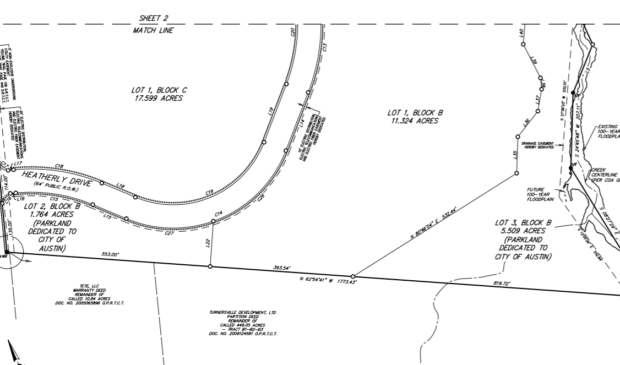Commission calls city’s approach to South Austin planning “piecemeal”
Wednesday, January 22, 2020 by
Jessi Devenyns Cases that come before the Zoning and Platting Commission are reviewed individually. But when a zoning request change at 12001 S. Interstate 35 came up at the Jan. 7 meeting, it caused the commission to lament the overall process for being too myopic.
“Austin has gotten so far from planning,” said Commissioner Jim Duncan. “Unfortunately, zoning replaces planning in this case.”
The request that came before the commission was to change the land use for 58 acres of unplatted land into three lots: one for multifamily development, one for a right of way and one for parkland. The plan received the unanimous recommendation of the commission. However, when the discussion about development in the southernmost reaches of Austin widened, commissioners questioned how approving individual developments without a larger overarching approach to development was going to affect the connectivity of the region.
“This is definitely not a great situation,” said Chair Jolene Kiolbassa.
“I do share your concerns about this piecemeal planning process that we have right now,” said Commissioner David King.
Two landowners who cumulatively have nearly 1,000 acres abutting this proposed Three Hills Apartments project came to tell commissioners that approaching the development of large tracts in this manner will ultimately reduce connectivity for future residents. The properties are situated in the nook between I-35 and State Highway 45.
This area of town is designated as a Regional Center on the Imagine Austin Map. In fact, the intersection of these highways is specifically called out to “have a dense central hub surrounded by well-connected but lower density development.”
“It appears to me that we’re not looking at this from 10,000 feet. We’re not trying to coordinate,” said Carl Irvin, who owns 450 acres directly to the south of the site the commission was discussing.
Joey de la Garza, the case manager with the Development Services Department, said, “All I can review for is the subject tract.”
Adjacent landowners and commissioners posed questions about sewer and wastewater connectivity, right of way expansion and the future extension of the 58-acre subdivision’s roads to the other, undeveloped properties.
The design for the sewer system caused particular concern for Justin Spillman, whose family has owned neighboring land since 1923. In the proposed development plan, the wastewater lines will travel along I-35 along a slope and provide stub-outs for the nearby landowners. “It doesn’t make sense,” said Spillman. “Crud doesn’t flow uphill without a pump.” At approximately $38,000, according to Irvin, this solution is putting an undue burden on the landowners when there are other potential alternatives to route wastewater.
Irvin told commissioners that part of the disconnect between the plan and its on-the-ground feasibility is that the solutions are being designed from behind a desk. “When you’re sitting in an office you don’t necessarily know … the nature of the property,” he said.
King expressed his surprise that city staff did not actively go out to the sites they review for zoning and land use changes. In this case, he expressed concern that the resulting plan for the Three Hills Apartments will leave the other surrounding landowners isolated from connectivity.
The lack of interconnectivity planning now, explained Commissioner Jim Duncan, will have consequences down the road. “We’re going to lose some really great opportunities,” he said. However, he noted the question of assessing the development of this region was a task for City Council. “I think only the Council can look at the importance of this area and realize we don’t want to blow it.”
District 5 Council Member Ann Kitchen told the Austin Monitor that she is working with her staff and other city departments to address development in the area in a comprehensive manner. “We think that it’s important to figure out a way to look at that area holistically. It’s a matter of coordinating with the city departments as well as the county,” she said.
Despite the commission’s reservations about the city’s planning process in the southern outskirts of Austin, they voted unanimously to recommend the zoning change.
Map courtesy of the city of Austin.
The Austin Monitor’s work is made possible by donations from the community. Though our reporting covers donors from time to time, we are careful to keep business and editorial efforts separate while maintaining transparency. A complete list of donors is available here, and our code of ethics is explained here.
You're a community leader
And we’re honored you look to us for serious, in-depth news. You know a strong community needs local and dedicated watchdog reporting. We’re here for you and that won’t change. Now will you take the powerful next step and support our nonprofit news organization?






